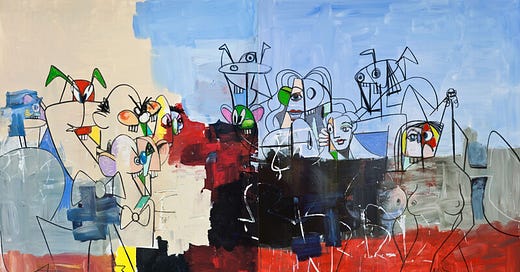George Condo is Warhol’s 21st Century Heir
Recent Condo shows, including at the Morgan Library, underscore the painter's connection to pop art's king.
George Condo is the perfect 21st century artist. In the age of collabs and curation, his mixing of bubbly fine art and high-culture capitalism is emblematic of the arts today and a metaphor for the way visual art is more accessible than ever. With 3 new shows in the span of a few months — at the Morgan Library in New York, Hauser and Wirth in LA, and Monaco’s Musée National — Condo’s star continues to rise as both a beautiful painter and Instagram-friendly creator.
Condo is undeniably well-versed in art history — a few minutes into a brief talk he gave to mark the opening of his exhibition at the Morgan Library, he mentioned Basquiat, Old Masters, Haring, Picasso, and threw in Molière as well. And yet his penchant for cross-genre collaborations, from fashion to music, suggests he’s not content with the traditional art world and, like his old boss Andy Warhol, wants to redefine who fine art is for.
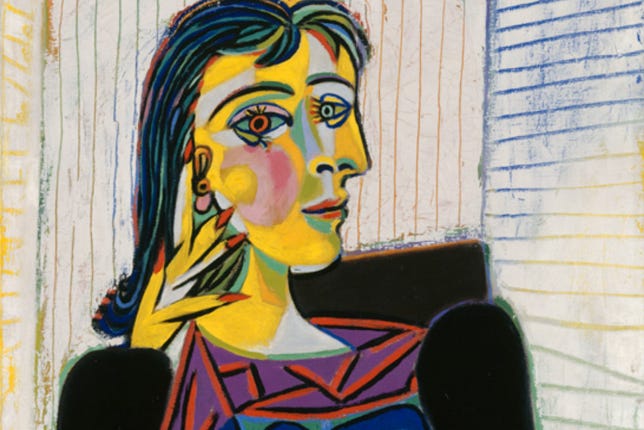
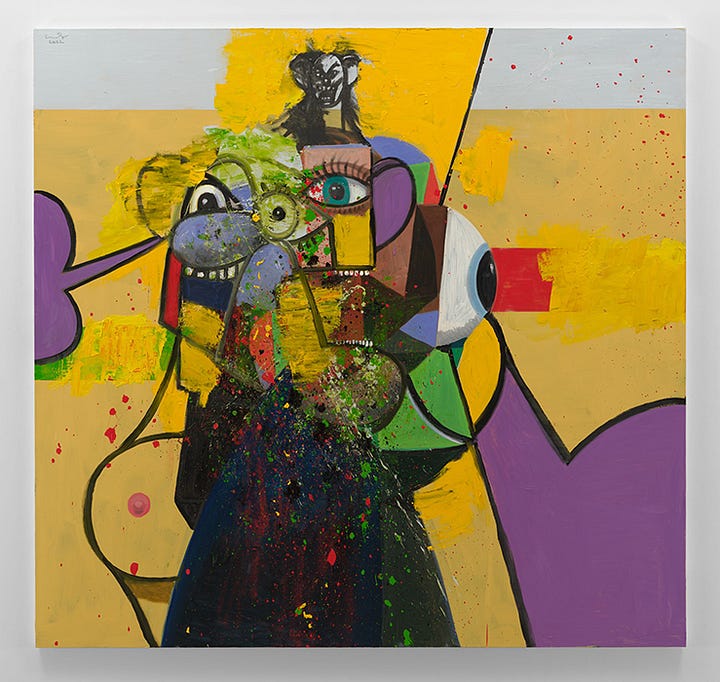
In some ways Condo’s works are simple, exaggeratedly understandable. At the exhibition People are Strange at Hauser and Wirth in LA, big blue eyes peer out from under thick lashes and cartoonish noses bobble below rows of grinning teeth. This is not to devalue his beguiling portraits. The debt to Picasso is obvious, even celebrated. They feel like the inevitable — and American — evolution of Picasso’s portraits of Marie Thérèse and other lovers. Why American? They are more easily consumed, smoother, with primary colors that bring to mind Saturday morning cartoons (sometimes a reference he makes overtly).
Which brings me to his genius — a true fine artist with technical skill, deep art historical knowledge, social commentary and societal observation, Condo perfectly embodies the age of the commercial x art world collab.
As Blake Gopnik observed in the New York times, we’re no longer content with artists confined to the works they make. We want their personalities to leap off the canvas and we want to consume the artist as a brand — we want to buy their clothes, immerse ourselves in their work (or sometimes not even their work) know what they eat in their studio. The massive popularity of immersive experiences and ballooning number of artist-related merchandise implies the interest of the general public is involved, not just the art world. The natural outcome of this growing, profitable interest from the non-art world is for artists to collaborate with non-art folk.
The marriage makes perfect sense: the art lends a dose of cultural relevancy and clout to a brand, and the artist or estate reaps the hefty profits. By now you’re probably thinking of Yayoi Kusama’s multipronged project with Louis Vuitton, ranging from a giant Kusama looming over the brand’s Champs Elysées location to an animatronic artist spooking audiences on Fifth Avenue (and we haven’t even started on what you can actually buy, which is classic LV gear covered in Kusama’s signature dots).
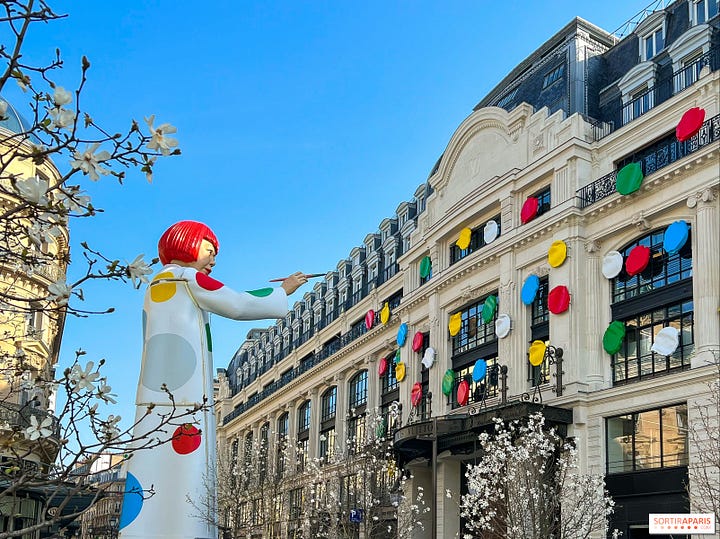

Or perhaps the Basquiat estate’s popular collaboration with Coach, covering leather totes in his iconic crowns and skulls as the latest iteration in an army of merch. Some collaborations feel more grasping than others — the Basquiat estate’s willingness to slap a skull on anything that will sell, for example, along with charges of $45 per ticket for NYC’s recent King Pleasure exhibition, feels more financially-focused than creatively curious. That, combined with the fact that Basquiat is no longer alive to support or condone the collaborations, feels very different from Kusama’s longstanding and active interest in the fashion world (previous collaborations include skateboard decks at MoMA and a 2012 Louis Vuitton collection). Condo’s collaborations fall somewhere in the middle. Is he trying to tap into the moneymaking machine of pop culture, establish himself as a genre-bending creator, or something in between?
Kusama’s preferred industry is fashion, but Condo has focused on the music collab for many years. He’s a musician himself, and a fan of Bach and Beethoven, so it’s hardly surprising he painted a court jester for the Metropolitan Opera’s rendition of Rigoletto in 2013. His biggest collaboration was for Kanye West’s My Beautiful Dark Twisted Fantasy, which resulted in five paintings (the final digital cover was deemed too sexual, and blurred so as to not scare the innocent American youth). His 2020 collaboration with Travis Scott for the cover of Scott’s single Franchise was a classic, beautifully-rendered Condo portrait: unnerving yet hopeful, screaming mouths and wide eyes against an optimistic blue sky, and generated an additional round of Scott x Condo merch. It wasn’t his first foray into the clothing collab; in 2010 he collaborated with designer Adam Kimmel on a t-shirt for the now-defunct Barney’s;
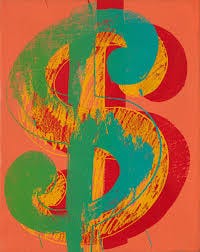
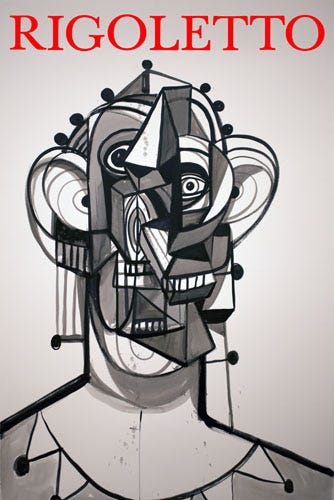
Condo follows in the footsteps not only of Picasso, visually, but of Warhol, commercially. During Condo’s stint diamond dusting Warhol’s prints as his studio assistant in his Tribeca print shop, he picked up the legend’s taste for the eye-catching, the pop-friendly, the commercial. The year was 1980, and 23-year-old George likely helped produce pop-art favorites that were churning out of the studio, like Shoes with Diamond Dust (1980), Dollar Sign (1980), and Beatles (1980).
We respect Warhol today as both a fine artist and commercial/pop culture savant. Witnessing (and helping) Warhol break that boundary must have clicked for a suburban American kid who was steeped in an art history degree, a lover of Old Masters with an interest in cartoons. And it’s paid off fantastically for Condo, who has repeatedly broken his own multi-million-dollar auction record over 2017/18 and regularly fetches seven-figure prices.
What’s next for Condo? Interestingly, the artist has refrained from dabbling in NFTs or immersive experiences thus far, although it’s easy to imagine a Condo character on the blockchain. But as the recent exhibition of Condo’s drawings at the Morgan Library suggests, he’s a talented draughtsman whose attachment to Old Masters runs deep — so perhaps he’ll stick it out in the analog world, after all.

